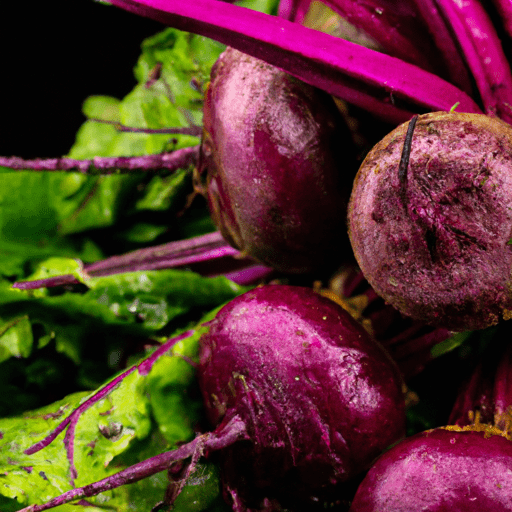All About Baby Beet: A Delightful Addition to Your Cooking
Baby beet, a petite and vibrant root vegetable, is a culinary delight that deserves more attention in your kitchen. This mini version of the well-known beetroot offers a tender texture, a subtly sweet flavor, and an array of culinary possibilities. From its versatile nature to its incredible nutritional profile, there are countless reasons why baby beet should become a staple ingredient in your cooking adventures. So, let’s dive deep into the wonderful world of baby beet!
A Tantalizing Taste Sensation
Baby beets possess a milder and sweeter taste compared to their mature counterparts, making them perfect for those who prefer a less earthy and robust flavor. The sweetness of baby beets intensifies as they are cooked, adding a delightful natural sugariness to a wide range of dishes. Whether roasted, steamed, or even pickled, these young beets offer a tender and subtly crisp texture, providing a unique mouthfeel that will awaken your taste buds.
Versatility Knows No Bounds
When it comes to versatility, baby beets take the crown. These pint-sized delights can be prepared and incorporated into various culinary creations. Roasting baby beets with a drizzle of olive oil and a sprinkle of salt and pepper will bring out their natural sweetness and enhance their earthy undertones. Sliced or diced, they make an excellent addition to hearty salads, adding a burst of color and flavor. You can also use them in soups, purees, and even juices for an added dose of wholesome goodness!
Nutritional Powerhouse
Alongside their delicious taste and culinary diversity, baby beets are packed with nutrients that contribute to a well-balanced diet. These vibrant roots are an excellent source of fiber, which aids digestion and supports a healthy gut. They are also rich in vitamin C, an essential nutrient that boosts the immune system and aids in collagen production, promoting healthy skin. Additionally, baby beets contain beneficial antioxidants that protect the body against inflammation and oxidative stress. With their low calorie count, including baby beets in your meals allows you to indulge in a nutrient-packed treat without compromising your health goals.
Unearthing History and Fun Facts
The history of beets dates back to ancient times, with records suggesting their cultivation in ancient Egypt as early as 4,000 BC. The Romans were especially fond of beets, consuming both the roots and the tops. By the 19th century, beets gained recognition as a valuable food source due to their high sugar content, leading to the extraction of sugar from beets as a replacement for cane sugar. Today, baby beets continue to be celebrated for their culinary and nutritional value, gracing the plates of esteemed chefs and home cooks alike.
Did you know that beets were used historically as a natural dye? Their vibrant red hue has been utilized to stain clothing, create vibrant artwork, and even dye Easter eggs. So, while you’re incorporating baby beets into your cooking, consider the possibility of embracing their natural dyeing abilities for some creative exploration outside of the kitchen.
Embrace the Baby Beet Magic
Adding baby beets to your culinary repertoire opens up a world of flavors, textures, and nutritional benefits. Their subtle sweetness, tender texture, and versatility make them a fantastic addition to a wide array of dishes. Whether you’re roasting them, tossing them into a salad, or experimenting with their natural dyeing abilities, baby beets are sure to elevate both the visual appeal and taste profile of your meals. So don’t overlook these tiny powerhouses; let the magic of baby beets unfold in your kitchen!
Remember: Good things come in small packages, and baby beets are no exception!
Baby Beet
Origin and Common Uses:
- Baby beets are small and tender versions of regular beets, often harvested when they are still young and small.
- Beets, including baby beets, belong to the botanical family Amaranthaceae and the genus Beta vulgaris.
- Beetroot cultivation dates back to ancient times, with evidence of beetroot domestication in the Mediterranean region over 2,000 years ago.
- The exact origin of baby beets is uncertain, but they are most commonly associated with European cuisines.
- Baby beets are versatile and can be used in various culinary preparations, including salads, roasting, pickling, or steaming.
Nutritional Benefits:
- Baby beets are nutrient-dense and offer a range of health benefits.
- They are a low-calorie vegetable, with approximately 35 calories per 100 grams.
- Baby beets are a good source of dietary fiber, which aids in digestion and promotes a healthy gut.
- They are also rich in essential vitamins and minerals, including folate, vitamin C, iron, potassium, and manganese.
- Baby beets contain phytonutrients, such as betalains, which have antioxidant and anti-inflammatory properties.
Unique Properties and Historical Significance:
- Beets, including baby beets, have been used historically for their medicinal properties, including improving digestive health, treating anemia, and supporting liver function.
- The pigment responsible for the vibrant red color of beetroots, including baby beets, is called betacyanin.
- Baby beets are known for their earthy, sweet, and slightly tangy flavor.
- They come in a variety of colors, including red, yellow, and striped varieties.
- Baby beets can have edible stems and leaves known as beet greens, which are rich in nutrients and can be used in cooking or salads.
Please note that while beets are generally safe to eat, some individuals may experience a slight reddening of urine or stool due to the pigments present in beets. If you have concerns, consult with a medical professional.




Use the share button below if you liked it.
It makes me smile, when I see it.